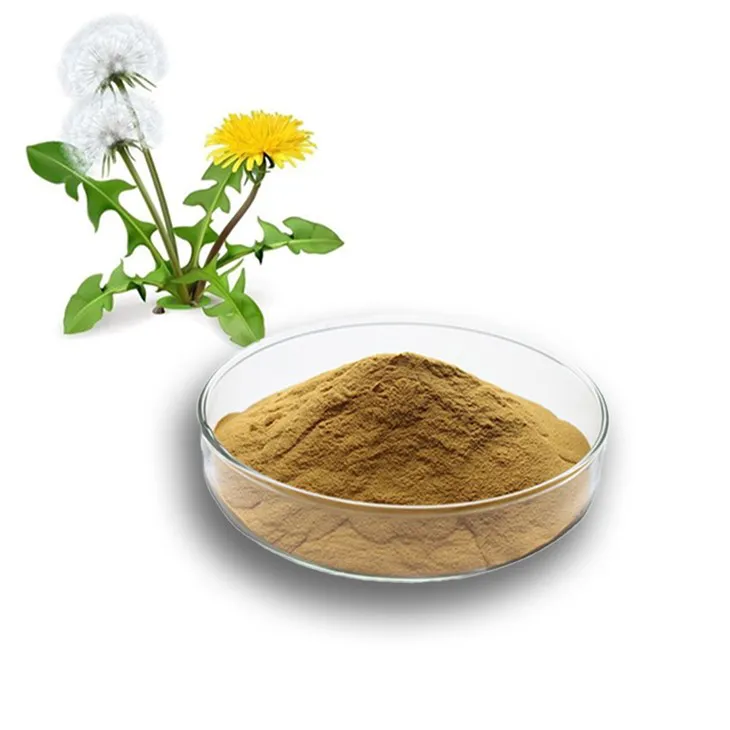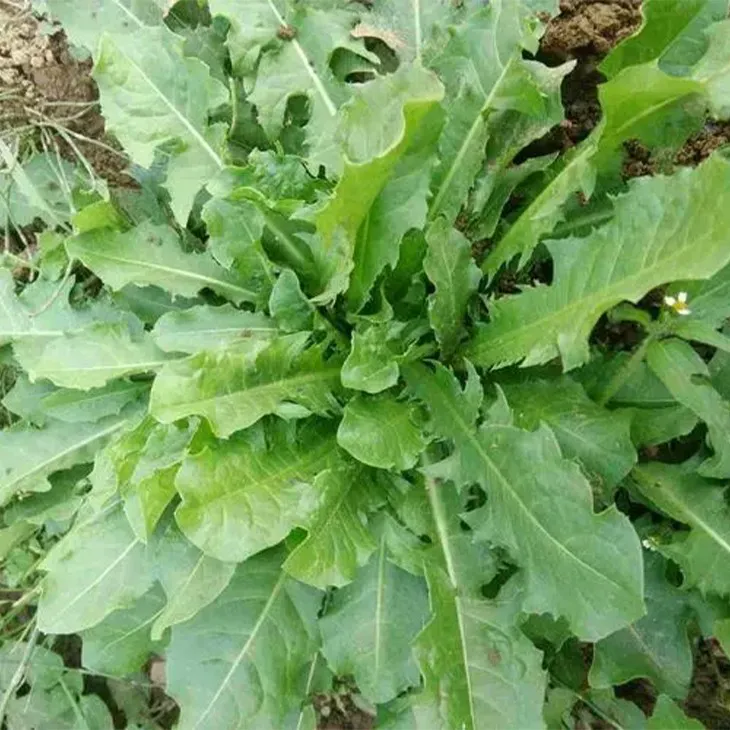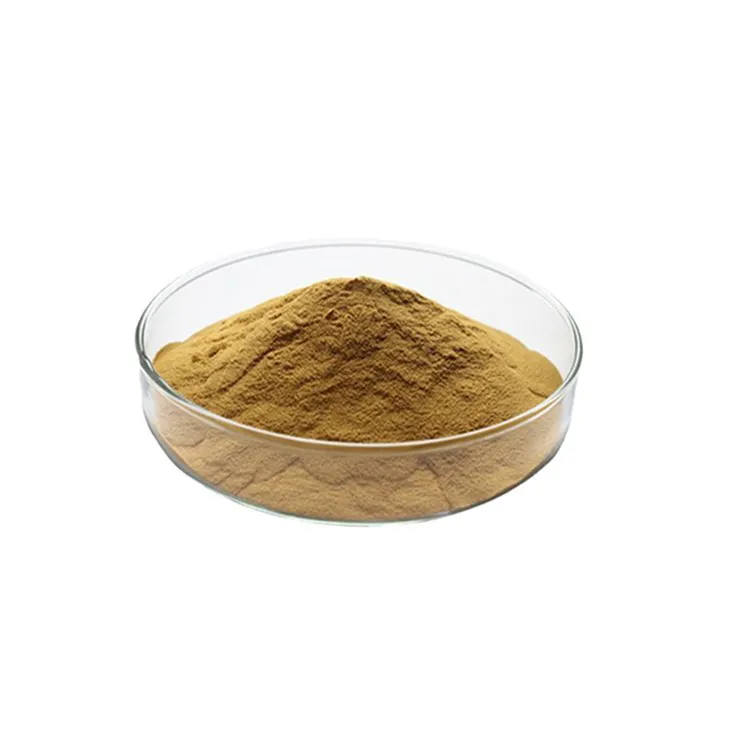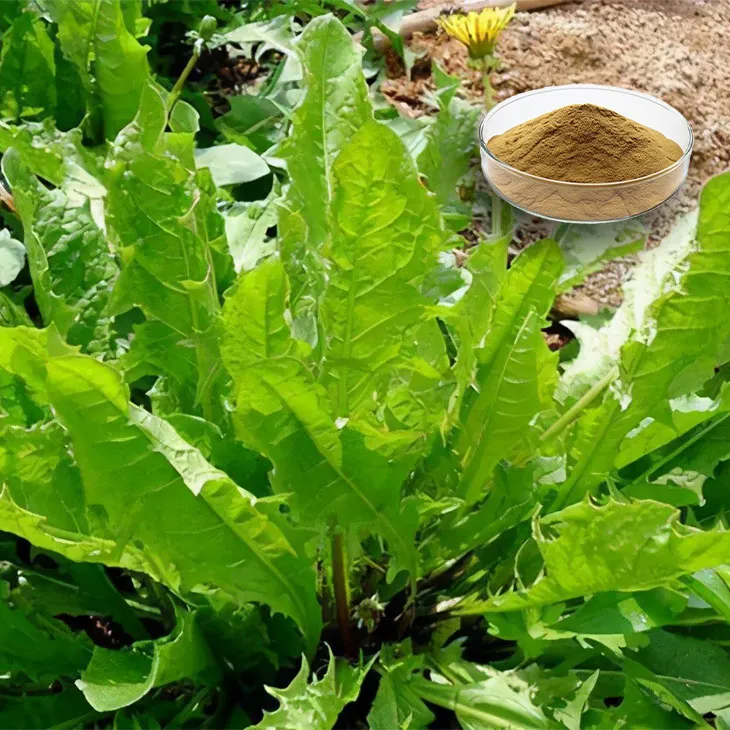- 0086-571-85302990
- sales@greenskybio.com
Supercritical Carbon Dioxide Extraction of Dandelion Leaf Extracts
2024-11-27

1. Introduction
Dandelion (Taraxacum officinale) is a common plant that has been used in traditional medicine for centuries. Dandelion leaves, in particular, are rich in a variety of bioactive compounds, such as phenolic acids, flavonoids, and terpenoids. These compounds are known for their antioxidant, anti - inflammatory, and antimicrobial properties. Therefore, the extraction of Dandelion Leaf Extracts has attracted increasing attention in recent years.
Traditional extraction methods, such as solvent extraction and steam distillation, have some limitations. For example, solvent extraction may leave residual solvents in the extract, which can affect the quality and safety of the product. Steam distillation is mainly suitable for the extraction of volatile compounds, and it may cause thermal degradation of some heat - sensitive components. Supercritical carbon dioxide (sc - CO₂) extraction technology has emerged as a promising alternative in recent decades.

2. Supercritical Carbon Dioxide Extraction Technology
2.1 Properties of Supercritical Carbon Dioxide
Carbon dioxide (CO₂) is a non - toxic, non - flammable, and inexpensive gas. Under supercritical conditions (temperature and pressure above its critical point, which is 31.1 °C and 7.38 MPa), CO₂ exhibits unique properties. It has a density similar to that of a liquid, which enables it to dissolve a wide range of substances. At the same time, its viscosity and diffusivity are closer to those of a gas, which allows for faster mass transfer during the extraction process.
2.2 The Principle of Supercritical Carbon Dioxide Extraction
In the supercritical CO₂ extraction process, sc - CO₂ acts as a solvent. The dandelion leaves are placed in an extraction vessel. When sc - CO₂ is passed through the leaves, it selectively dissolves the bioactive compounds. The solubility of different compounds in sc - CO₂ can be adjusted by changing the extraction conditions, such as temperature, pressure, and the addition of co - solvents. After the extraction, the pressure is reduced, and CO₂ returns to its gaseous state, leaving behind the concentrated extract.

3. Advantages of Supercritical Carbon Dioxide Extraction for Dandelion Leaf Extracts
3.1 High - Quality Extract
Supercritical CO₂ extraction can produce a high - quality Dandelion Leaf Extract. Since CO₂ is a relatively inert gas, it is less likely to cause chemical reactions with the bioactive compounds during the extraction process. This helps to preserve the integrity and activity of the compounds. Moreover, the extraction can be highly selective, allowing for the isolation of specific bioactive components.
3.2 Environmentally Friendly
One of the major advantages of supercritical CO₂ extraction is its environmental friendliness. CO₂ is a natural component of the atmosphere, and it is not considered a pollutant. Unlike some organic solvents used in traditional extraction methods, CO₂ does not produce harmful waste or emissions. Additionally, the energy consumption in the sc - CO₂ extraction process can be relatively low, further reducing its environmental impact.
3.3 Precise Control of the Extraction Process
The extraction conditions in supercritical CO₂ extraction can be precisely controlled. By adjusting parameters such as temperature, pressure, and flow rate, the solubility of different compounds in sc - CO₂ can be optimized. This enables the production of extracts with consistent quality. For example, if the goal is to extract a particular flavonoid with high purity, the extraction conditions can be fine - tuned to maximize its extraction while minimizing the extraction of other unwanted compounds.

4. Factors Affecting Supercritical Carbon Dioxide Extraction of Dandelion Leaf Extracts
4.1 Temperature
Temperature has a significant impact on the solubility of bioactive compounds in supercritical CO₂. As the temperature increases, the density of sc - CO₂ decreases, which may lead to a decrease in the solubility of some compounds. However, for some other compounds, an increase in temperature may enhance their solubility due to changes in intermolecular forces. Therefore, the optimal temperature needs to be determined based on the specific compounds to be extracted.
4.2 Pressure
Pressure is another crucial factor. Generally, an increase in pressure leads to an increase in the density of sc - CO₂, which in turn increases the solubility of most bioactive compounds. However, very high pressures may also increase the cost and complexity of the extraction process. So, a balance needs to be struck between extraction efficiency and cost - effectiveness.
4.3 Co - solvents
Although supercritical CO₂ can dissolve a wide range of substances, some polar compounds may have low solubility in pure sc - CO₂. In such cases, co - solvents can be added to improve the solubility. Commonly used co - solvents include ethanol, methanol, and water. The addition of co - solvents can also affect the selectivity of the extraction process.
4.4 Particle Size of Dandelion Leaves
The particle size of dandelion leaves affects the mass transfer rate during the extraction process. Smaller particle sizes generally result in a larger surface area, which facilitates the contact between the leaves and sc - CO₂ and thus improves the extraction efficiency. However, if the particle size is too small, it may cause problems such as clogging in the extraction system.

5. Applications of Dandelion Leaf Extracts Obtained by Supercritical Carbon Dioxide Extraction
5.1 Pharmaceutical Industry
In the pharmaceutical industry, the dandelion leaf extract can be used for the development of new drugs or as a natural supplement. The bioactive compounds in the extract, such as flavonoids and phenolic acids, have shown potential in treating various diseases, including inflammation - related disorders and oxidative stress - related diseases.
5.2 Cosmetic Industry
Dandelion leaf extract is also a valuable ingredient in the cosmetic industry. Its antioxidant and anti - inflammatory properties make it suitable for use in skin care products. For example, it can be added to creams, lotions, and serums to protect the skin from environmental damage, reduce inflammation, and improve skin elasticity.
5.3 Food Industry
In the food industry, dandelion leaf extract can be used as a natural preservative or a functional food ingredient. The antimicrobial properties of the extract can help to extend the shelf life of food products. Additionally, it can be added to beverages or food supplements to provide health - promoting benefits.
6. Challenges and Future Directions
6.1 High - cost Equipment
One of the main challenges in supercritical CO₂ extraction is the high cost of the equipment. The extraction system requires high - pressure vessels, pumps, and control systems, which are relatively expensive. This limits the widespread application of this technology, especially for small - scale producers.
6.2 Optimization of Extraction Conditions
Although the general principles of supercritical CO₂ extraction are well - known, the optimization of extraction conditions for different dandelion leaf components is still an area of ongoing research. More in - depth studies are needed to fully understand the relationship between extraction conditions and the quality and yield of the extract.
6.3 Scale - up of the Process
Scaling up the supercritical CO₂ extraction process from the laboratory scale to the industrial scale also presents challenges. Issues such as mass transfer limitations, uniformity of extraction, and cost - effectiveness need to be addressed.
In the future, research efforts should focus on developing more cost - effective equipment, further optimizing extraction conditions, and successfully scaling up the process. This will enable the supercritical CO₂ extraction of dandelion leaf extracts to be more widely used and contribute to the sustainable utilization of dandelion resources.
FAQ:
What are the bioactive substances in dandelion leaves?
Dandelion leaves contain various bioactive substances such as flavonoids, phenolic acids, and terpenoids. These substances have antioxidant, anti - inflammatory, and other potential health - promoting properties.
How does supercritical CO₂ act as a solvent in the extraction of dandelion leaf extract?
Supercritical CO₂ has properties between a gas and a liquid under specific conditions (above its critical temperature and pressure). It can dissolve certain components from dandelion leaves like a solvent. The solubility can be adjusted by changing the temperature and pressure, allowing for selective extraction of the desired bioactive substances.
What are the advantages of supercritical CO₂ extraction compared to traditional extraction methods for dandelion leaf extract?
Compared to traditional extraction methods, supercritical CO₂ extraction has several advantages. Firstly, it can produce a purer and more concentrated extract. Secondly, it is a green technology as CO₂ is non - toxic, non - flammable, and can be easily recycled, reducing environmental pollution. Also, it allows for better control over the extraction process, which can result in a more consistent product quality.
How can the extraction process of supercritical CO₂ for dandelion leaf extract be optimized?
The extraction process can be optimized by carefully adjusting parameters such as temperature, pressure, and extraction time. Additionally, the use of co - solvents in small amounts can sometimes enhance the solubility of certain components. Pretreatment of the dandelion leaves, such as drying and grinding, can also affect the extraction efficiency.
What potential applications does the dandelion leaf extract obtained by supercritical CO₂ extraction have?
The dandelion leaf extract obtained by this method has potential applications in the pharmaceutical industry as it may be used for developing drugs or dietary supplements with antioxidant or anti - inflammatory properties. In the cosmetic industry, it could be used in skincare products due to its potential beneficial effects on the skin. It may also find applications in the food industry as a natural preservative or flavor enhancer.
Related literature
- Supercritical Fluid Extraction of Bioactive Compounds from Dandelion: A Review"
- "Optimization of Supercritical CO₂ Extraction of Dandelion Leaf Flavonoids"
- "The Use of Supercritical CO₂ in Extracting High - Quality Dandelion Leaf Extracts for Medicinal Purposes"
- ▶ Hesperidin
- ▶ citrus bioflavonoids
- ▶ plant extract
- ▶ lycopene
- ▶ Diosmin
- ▶ Grape seed extract
- ▶ Sea buckthorn Juice Powder
- ▶ Beetroot powder
- ▶ Hops Extract
- ▶ Artichoke Extract
- ▶ Reishi mushroom extract
- ▶ Astaxanthin
- ▶ Green Tea Extract
- ▶ Curcumin Extract
- ▶ Horse Chestnut Extract
- ▶ Other Problems
- ▶ Boswellia Serrata Extract
- ▶ Resveratrol Extract
- ▶ Marigold Extract
- ▶ Grape Leaf Extract
- ▶ blog3
- ▶ blog4
-
Cordyceps extract suppliers.
2024-11-27
-
Chinese aguaje extract powder manufacturers.
2024-11-27
-
Honeysuckle pollen of the best quality.
2024-11-27
-
Chinese Senna Leaf Extract Suppliers.
2024-11-27
-
Organic Dandelion Root Extract, Australia.
2024-11-27
-
The best bitter gourd extract in 2024.
2024-11-27
-
The best baicalin in nature.
2024-11-27
-
Chinese lily extract manufacturers.
2024-11-27
-
Nature's best β - carotene.
2024-11-27
-
Feverfew Extract
2024-11-27
-
Peppermint Oil
2024-11-27
-
Lotus leaf extract
2024-11-27
-
Mulberry Extract
2024-11-27
-
Cranberry Extract
2024-11-27
-
Tinospora cordifolia extract
2024-11-27
-
Chasteberry Extract
2024-11-27
-
Camu Camu Extract
2024-11-27
-
Maitake Mushroom Extract
2024-11-27
-
Bamboo Leaf extract
2024-11-27





















